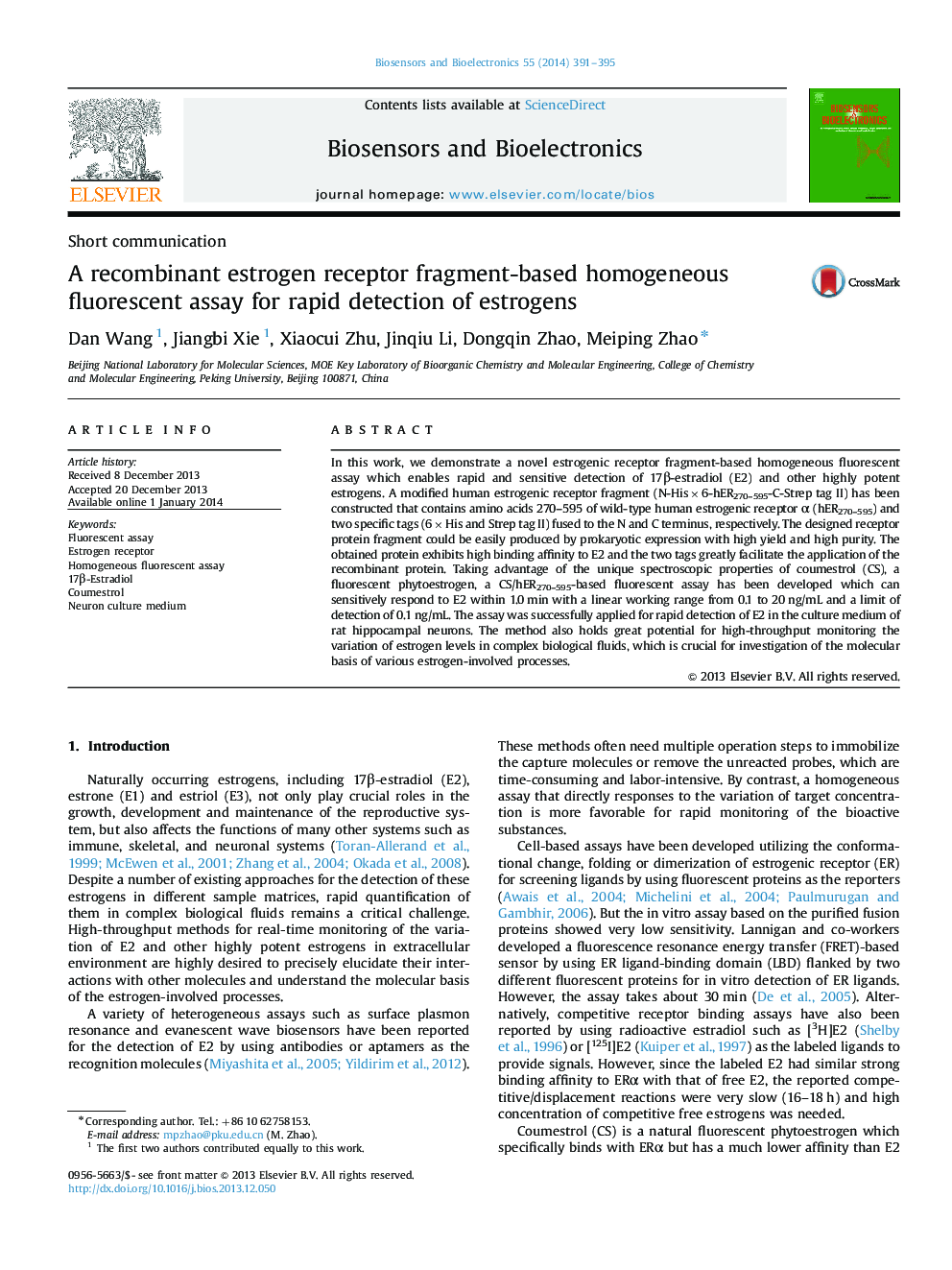| کد مقاله | کد نشریه | سال انتشار | مقاله انگلیسی | نسخه تمام متن |
|---|---|---|---|---|
| 866534 | 1470976 | 2014 | 5 صفحه PDF | دانلود رایگان |
• We developed a novel homogeneous fluorescent assay for rapid detection of 17β-estradiol within 1 min.
• The assay is very sensitive and achieves a detection limit of 0.1 ng/mL for 17β-estradiol.
• The recombinant human estrogenic receptor fragment shows the advantages of smaller size, stability, and high affinity to estrogens.
• The assay can also be used to measure the total amount of highly potent estrogens.
• The assay has the potential to be integrated into a micro-device to enable in-situ, on-line detection of 17β-estradiol.
In this work, we demonstrate a novel estrogenic receptor fragment-based homogeneous fluorescent assay which enables rapid and sensitive detection of 17β-estradiol (E2) and other highly potent estrogens. A modified human estrogenic receptor fragment (N-His×6-hER270–595-C-Strep tag II) has been constructed that contains amino acids 270–595 of wild-type human estrogenic receptor α (hER270–595) and two specific tags (6×His and Strep tag II) fused to the N and C terminus, respectively. The designed receptor protein fragment could be easily produced by prokaryotic expression with high yield and high purity. The obtained protein exhibits high binding affinity to E2 and the two tags greatly facilitate the application of the recombinant protein. Taking advantage of the unique spectroscopic properties of coumestrol (CS), a fluorescent phytoestrogen, a CS/hER270–595-based fluorescent assay has been developed which can sensitively respond to E2 within 1.0 min with a linear working range from 0.1 to 20 ng/mL and a limit of detection of 0.1 ng/mL. The assay was successfully applied for rapid detection of E2 in the culture medium of rat hippocampal neurons. The method also holds great potential for high-throughput monitoring the variation of estrogen levels in complex biological fluids, which is crucial for investigation of the molecular basis of various estrogen-involved processes.
Journal: Biosensors and Bioelectronics - Volume 55, 15 May 2014, Pages 391–395
